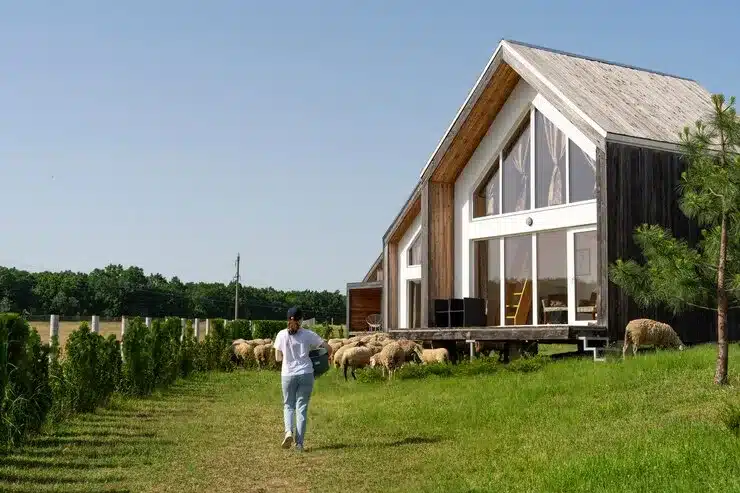
When it comes to choosing new windows for a historic bungalow home, homeowners face the difficult task of balancing preservation with modernization. The right windows can maintain the home’s historic charm while improving energy efficiency and comfort.
This article provides tips for Livermore homeowners seeking the ideal windows to bring their cherished bungalows into the 21st century. Over 100 words of practical advice follow on selecting windows that complement a bungalow’s architecture with options like double-hung, casement, and awning styles in wood, aluminum-clad wood, fiberglass, or vinyl.
With an understanding of the considerations around material, style, energy efficiency, size, trim, and hardware, homeowners can make informed decisions in keeping with preservation standards.
What is a Bungalow Home?
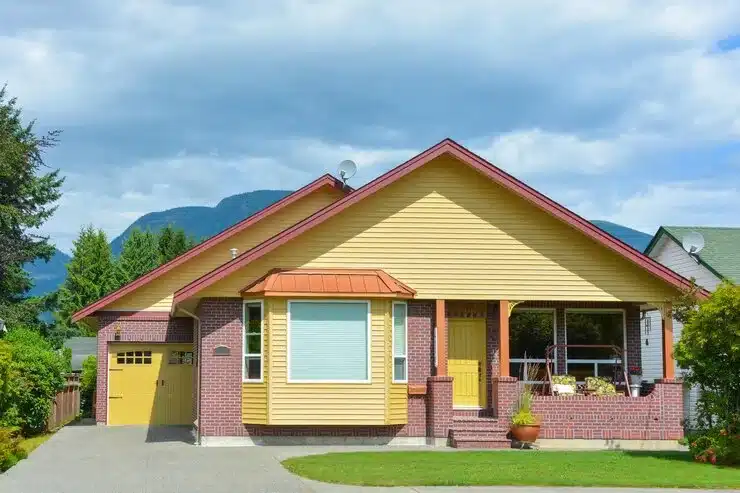
A bungalow home is a single-story house or cottage with a low-pitched roof and a wide front porch. The term “bungalow” originates from the Hindi word “Bangla,” meaning “Bengali” and refers to the type of bungalow-style homes that were common in Bengal, India during the British colonial period.
Bungalow homes first became popular in the early 20th century and remain a classic housing style today due to their spacious, open floor plans and connection to the outdoors. They are typically characterized by the following features:
- A single story. Most bungalows are one story in height, though some have small second stories or attic spaces. The single-story design allows for larger rooms and an open layout.
- Low-pitched roofs. Bungalows usually have roofs with a shallow pitch, often made of materials like wood shingles, clay tiles, or asphalt shingles. The low-sloped roofs help contribute to the home’s horizontal lines.
- Wide front porches. Nearly all bungalows have a large, covered front porch that serves as an entryway, outdoor living space, and transition area between the indoors and outdoors. Many have large columns supporting the porch roof.
- Large windows. Bungalows typically have many windows to allow natural light into the home and to enhance the connection between interior and exterior spaces. Windows are often placed high to take advantage of views.
- Spacious, open floor plans. Most bungalows feature an open floor plan without many dividing walls, allowing rooms to flow together. This layout maximizes the sense of space within the single-story design.
So in summary, a bungalow home is a classic single-story house design characterized by low-sloping roofs, wide front porches, large windows, and spacious, open floor plans – all features that help connect the indoors with the outdoors.
Common Bungalow Window Types and Materials
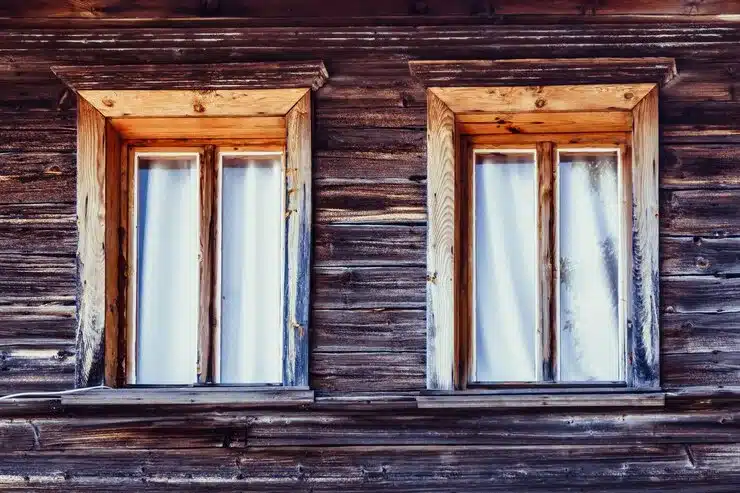
Wood Windows
Wood windows were commonly used in early 20th-century bungalows. Options include double-hung, casement, and fixed windows. Wood provides an authentic look but requires frequent maintenance to prevent rotting and water damage.
Aluminum Windows
Aluminum windows are a durable, low-maintenance alternative to wood. They can be manufactured in a variety of styles to match the architectural details of a bungalow. Aluminum is resistant to weathering and corrosion and does not require painting. However, aluminum is a poor insulator and can dent or scratch easily.
Vinyl or Fiberglass Windows
Vinyl and fiberglass are popular, affordable window materials that offer good insulation and weather resistance. They can be manufactured to replicate the look of wood windows. Vinyl and fiberglass do not dent or corrode over time. However, vinyl and fiberglass windows may not match the historic character of a bungalow or wood or aluminum. They can also become brittle in very hot or cold weather.
Composite or Clad Wood Windows
Composite or clad wood windows provide the best of both worlds. They feature an exterior made of aluminum or vinyl surrounding a wood window sash. They provide the authentic look of wood on the inside and the durability and low maintenance of aluminum or vinyl on the outside. Composite or clad wood windows tend to be more expensive but provide superior performance and lifespan.
Bungalow Window Replacement Considerations
When replacing windows in a historic bungalow home, several factors should be carefully considered to maintain the architectural integrity of the structure.
Size and Placement
The size, shape, and placement of new windows should match the original openings and designs. Bungalow windows are typically double-hung or casement, with a height greater than their width. They are also usually grouped, with multiple windows along the front facade.
Materials
Wood or wood-composite windows that mimic the appearance of the original wood windows are ideal for bungalows. Vinyl, aluminum, or fiberglass windows, while more energy efficient, do not replicate the look of wood and can detract from the home’s historic character.
Divided Lights
Bungalow windows often feature divided lights or smaller panes of glass separated by muntins. Replacement windows that offer simulated divided lights, with muntins adhered to a single pane of glass, provide an authentic look without sacrificing energy efficiency. True divided light windows with individual small panes set in a sash can be expensive and may not meet building codes for energy usage.
Trim and Hardware
The trim and hardware surrounding windows, like sills, stools, casings, and sashes, are distinctive features of the bungalow style. Replacement windows should be installed with matching wood trim, and hardware such as locks, lifts, and pulls should closely replicate the original designs. Paying attention to these architectural details will help new windows blend seamlessly into the bungalow facade.
With careful consideration of size, materials, divided lights, and trim, homeowners can install replacement windows that preserve the historic character of a bungalow home. New energy-efficient windows, when properly selected and installed, can give new life to an old home without compromising its vintage style. By respecting the original architecture, bungalow windows can be successfully replaced in a manner that is sustainable, historically sensitive, and aesthetically pleasing.
Choosing New Windows for Your Historic Bungalow
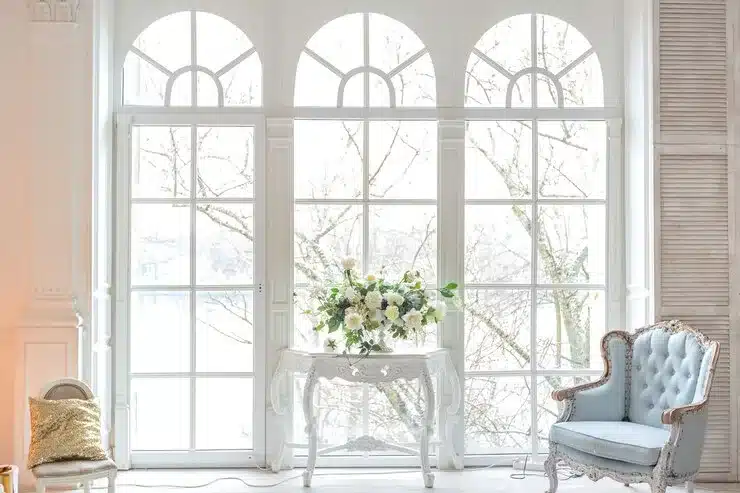
Sash Windows
Sash windows were commonly used in bungalows built during the early 20th century and are a classic choice for historic homes. Sash windows feature two separate panes of glass in a single frame that slide up and down, allowing for ventilation. For bungalows, double-hung sash windows with a one-over-one or two-over-two lite configuration are typical. These windows provide an authentic look while still functioning well.
Homeowners should look for sash window replacements that match the original window dimensions and profiles. Wood or aluminum-clad wood are good options as they have a traditional appearance and durability. Vinyl sash window replicas can also work but may not have the same historic character.
Casement Windows
Casement windows are another style used in bungalows, where one or more panes are attached to hinges at the side of the window frame, allowing them to be opened outward. Casement windows provide good ventilation and a more contemporary aesthetic. For a bungalow, opt for wood or clad-wood casement windows with a square or vertical rectangular shape. Narrow, rectangular windows arranged in a symmetrical pattern are also common for bungalows and help achieve a uniform and balanced facade.
Accent Windows
Smaller accent windows set above, within, or alongside main windows were frequently used in bungalows. Common types include:
- Transom windows: Windows set above doors or main floor windows.
- Sidelights: Narrow windows placed on one or both sides of doors.
- Clerestory windows: Tall, narrow windows set high on walls below the ceiling.
Accent windows should match or complement the style of the main windows. They add extra light, dimension, and architectural interest to bungalow exteriors and interiors. New accent window installations should align with the bungalow’s existing window patterns and sightlines to appear original.
In summary, choosing windows that match a bungalow’s era and style will help maintain its historic character. With attention to dimensions, profiles, materials, and window configurations, replacement windows can be installed without compromising the home’s architectural integrity.
Bungalow Window Installation Tips and Best Practices
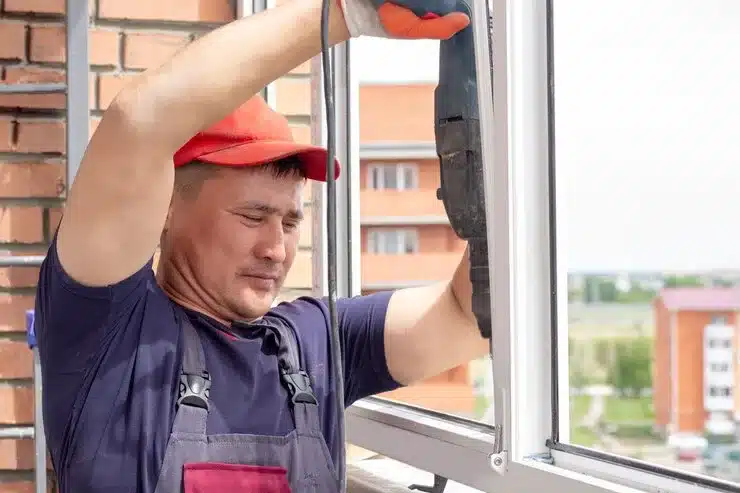
Choose windows that complement the home’s architecture.
For bungalows, it is best to select windows that match the style of the home. Double-hung, sliding, or casement windows with a craftsman design are ideal for most bungalows. The windows should have a simple frame and sash that provide clean, straight lines consistent with the arts and crafts style.
Pay attention to window proportions.
Windows that are too large or too small for the wall space can make a room feel out of balance. For bungalows, a good rule of thumb is that the total window area of a wall should not exceed 1/2 to 2/3 of the overall wall space. Windows should also have a vertical orientation, as was typical for the craftsman style.
Use natural wood or wood-look materials.
Wooden windows with a natural finish or wood-look aluminum or vinyl windows are good options for a bungalow. These materials blend in with the home’s craftsman detailing and natural wood accents. Avoid windows with a metallic or shiny finish, as these clash with the rustic bungalow style.
Provide adequate ventilation and energy efficiency.
While the windows need to match the bungalow style, they also need to meet modern standards for comfort and efficiency. Choose windows that provide both ventilation and energy efficiency, such as double-hung, sliding, or casement windows. Look for windows with double or triple panes and a low U-factor for the best insulation.
Hire an experienced installer.
Given the importance of windows for a bungalow’s appearance and functionality, it is best to hire an installer with extensive experience working on historic homes. They will know the proper techniques for installing windows in an older home to avoid damage and ensure the windows complement the architecture. With the right design choices and professional installation, new windows can enhance a bungalow’s historic character.
Conclusion
Choosing the right windows for your historic bungalow home is an important decision to preserve its character and curb appeal. At Rhino Livermore Window Replacement & Siding, we understand the unique needs of bungalow windows and can install the ideal windows for your home in Livermore, California.
If you are looking to replace or repair the windows on your historic bungalow home, our experienced team at Rhino Livermore Window Replacement & Siding can help. We specialize in installing the right bungalow windows for each home, using high-quality materials and thorough installation techniques.
Contact us today to discuss your bungalow window needs and get a free in-home estimate. We look forward to helping preserve and enhance the character of your historic home for years to come.
